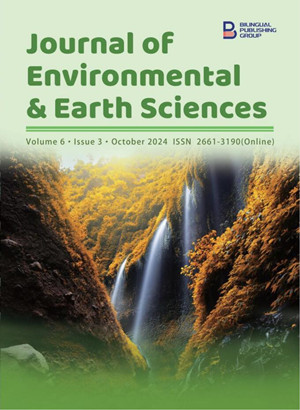
Migration Perspectives of Water Sector Cybersecurity
DOI:
https://doi.org/10.30564/jees.v6i3.7020Abstract
The use of digital technologies in the water sector has proved revolutionary in water management but also opens up critical infrastructure to cyber threats, with extreme risks to public health, economic instability, and even forced migration. Therefore, this paper will address how cybersecurity vulnerabilities intersect with migration through case studies from various regions like Norway, Israel, and the United States. By looking into the above incidents, the research speaks of the cascading effects of cyber-attacks on water systems and the urgency for all-encompassing policy frameworks addressing cyber and migration. On a similar note, it points out that the intensification of cyber threats is partly due to the technological innovation era and, on the other hand, the weaknesses in cybersecurity postures. It further highlights how these emerging technologies—specifically artificial intelligence and blockchain—can improve resiliency and provide practical recommendations for implementation even in resource-constrained settings. Through this multidisciplinary approach, the research contributes to a better understanding of protecting communities and critical infrastructure from the growing threat of cyber-induced displacement.
Keywords:
Cybersecurity; Water Sector; Forced Migration; Critical Infrastructure; Digital Resilience; SCADA Systems; Migration Policy; Technological Solutions; Ransomware Attacks; Public HealthReferences
[1] Altaleb, H., Rajnai, Z., 2024. A comprehensive analysis and solutions for enhancing SCADA systems security in critical infrastructures. Proceedings of The IEEE 11th International Conference on Computational Cybernetics and Cyber-Medical Systems. p. 1. Available from: https://www.researchgate.net/publication/381759077_A_Comprehensive_Analysis_and_Solutions_for_Enhancing_SCADA_Systems_Security_in_Critical_Infrastructures
[2] Besenyő, J., Gulyás, A., 2021. The effect of the dark web on security. Journal of Security and Sustainability Issues, 11(1), 103-121. DOI: https://doi.org/10.47459/jssi.2021.11.7
[3] Bederna, Z., Rajnai, Z., Szadeczky, T., 2020. Attacks against energy, water and other critical infrastructure in the EU. Proceedings of The 2020 IEEE 3rd International Conference and Workshop in Óbuda on Electrical and Power Engineering (CANDO-EPE); Budapest, Hungary. 000125-000130. DOI: 10.1109/CANDO-EPE51100.2020.9337751
[4] Besenyő, J., Kovács, A.M., 2024. Cybersecurity Vulnerabilities in the Water Sector. Springer.
[5] Kovacs, E., 2023. Ransomware hit SCADA systems at 3 water facilities in U.S. SecurityWeek. Available from: https://www.securityweek.com/ransomware-hit-scada-systems-3-water-facilities-us/
[6] Boubaker, K.B., 2021. Water industry: a look back at twenty years of cyber attacks. Stormshield. Available from: https://www.stormshield.com/news/twenty-years-of-cyber-attacks-on-the-world-of-water/
[7] Townsend, K., 2016. Michigan Power and Water Utility Hit by Ransomware Attack. SecurityWeek. Available from: https://www.securityweek.com/michigan-power-and-water-utility-hit-ransomware-attack/
[8] Olenick, D., 2018. North Carolina water utility ONWASA taken down by ransomware. SC Media. Available from: https://www.scmagazine.com/news/north-carolina-water-utility-onwasa-taken-down-by-ransomware
[9] Wall, T., 2022. Throwback Attack: Hackers attempt to flood Israeli water supply with chlorine. Industrial Cybersecurity Pulse. Available from: https://www.industrialcybersecuritypulse.com/facilities/throwback-attack-hackers-attempt-to-flood-israeli-water-supply-with-chlorine/
[10] Cohen, G., 2021. Throwback Attack: An insider releases 265,000 gallons of sewage on the Maroochy Shire. Industrial Cybersecurity Pulse. Available from: https://www.industrialcybersecuritypulse.com/facilities/throwback-attack-an-insider-releases-265000-gallons-of-sewage-on-the-maroochy-shire/#:~:text=Then%2D49%2Dyear%2Dold
[11] Greenberg, A., 2021. A Hacker Tried to Poison a Florida City’s Water Supply. Wired. Available from: https://www.wired.com/story/oldsmar-florida-water-utility-hack/
[12] Kariuki, P., Ofusori, L.O., Subramaniam, P.R., 2023. Cybersecurity threats and vulnerabilities experienced by small-scale African migrant traders in Southern Africa. Security Journal. DOI: https://doi.org/10.1057/s41284-023-00378-1
[13] Bhandari, P., Creighton, D., Gong, J., et al., 2023. Evolution of cyber-physical-human water systems: Challenges and gaps. Technological Forecasting and Social Change. 191, 122540. DOI: https://doi.org/10.1016/j.techfore.2023.122540
[14] Petersen, K., Wieltschnig, P., 2020. BALANCING INNOVATION AND VULNERABILITY: WATER SECURITY IN AN AGE OF CYBER-WARFARE. WIT Transactions on Ecology and the Environment. DOI: https://doi.org/10.2495/wp200071
[15] Mishra, B.K., Kumar, P., Saraswat, C., et al., 2021. Water security in a changing environment: concept, challenges, and solutions. Water. 13(4), 490. DOI: https://doi.org/10.3390/w13040490
[16] Hassanzadeh, A., Rasekh, A., Galelli, S., et al., 2020. A Review of Cybersecurity Incidents in the Water Sector' Journal of Environmental Engineering. 146(5), 03120003. DOI: https://doi.org/10.1061/(asce)ee.1943-7870.0001686
[17] Welle, D., 2020. Israel stops cyberattack on water system. DW.com, 28 May. Available from: https://www.dw.com/en/israel-thwarted-attack-on-water-systems-cyber-chief/a-53596796
[18] Ernst & Young, 2019. Welcome to e-Estonia: A digital pioneer stakes a claim in AI’s landscape. Global Tax News. Available from: https://globaltaxnews.ey.com/news/2019-5574-welcome-to-e-stonia-a-digital-pioneer-stakes-a-claim-in-ais-landscape
[19] Masip-Bruin, X., Marín-Tordera, E., Ruiz, J., et al., 2021. Cybersecurity in ICT supply chains: key challenges and a relevant architecture. Sensors. 21(18), 6057. DOI: https://doi.org/10.3390/s21186057
[20] Cremer, F., Sheehan, B., Fortmann, M., et al., 2022. Cyber risk and cybersecurity: A systematic review of data availability. The Geneva Papers on Risk and Insurance - Issues and Practice. 47(3). Available from: https://www.ncbi.nlm.nih.gov/pmc/articles/PMC8853293/
[21] Gilodi, A., Richard, C., Albert, I., et al., 2023. The Vulnerability of Young Refugees Living in Reception Centres in Luxembourg: An Overview of Conditions and Experiences across Subjective Temporal Imaginaries. Social Sciences. 12(2), 102. DOI: https://doi.org/10.3390/socsci12020102
[22] McLeman, R.A., Hunter, L.M., 2010. Migration in the context of vulnerability and adaptation to climate change: insights from analogues. Wiley Interdisciplinary Reviews: Climate Change. 1(3), 450–461. DOI: https://doi.org/10.1002/wcc.51
[23] Besenyő, J., Fehér, A., 2020. Critical Infrastructure Protection (CIP) as New Soft Targets: Private Security vs. Common Security. Journal of Security and Sustainability Issues. 10(3), 14. DOI: https://doi.org/10.9770/jssi.2020.10.1(1)
[24] UNHCR - The UN Refugee Agency, 2024. Global Trends | 2023. UNHCR. Available from: https://www.unhcr.org/global-trends
Downloads
How to Cite
Issue
Article Type
License
Copyright © 2024 Attila Máté Kovács

This is an open access article under the Creative Commons Attribution-NonCommercial 4.0 International (CC BY-NC 4.0) License.







 Attila Máté Kovács
Attila Máté Kovács






